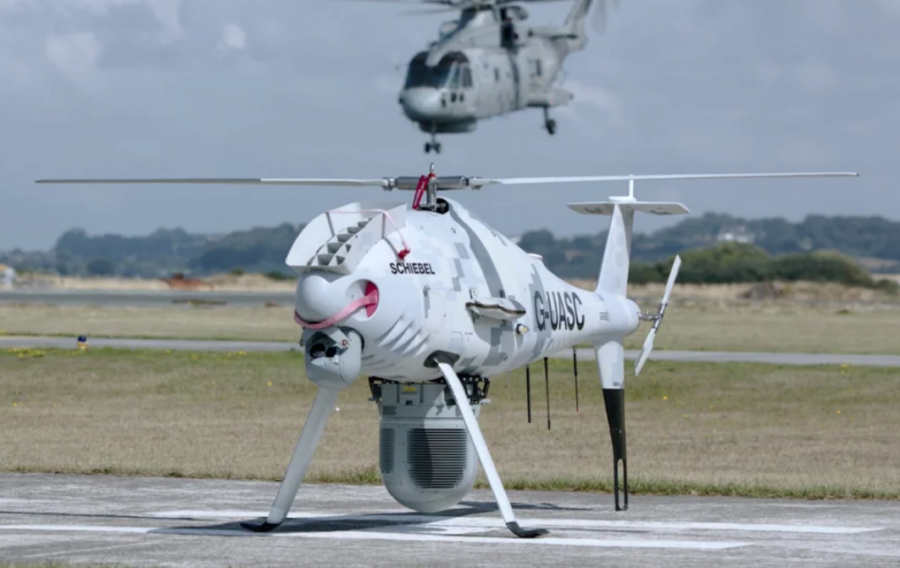
DE&S has procured new uncrewed aerial technology for the Royal Navy to find and track surface contacts of interest to enable freedom of navigation and good order at sea.
Powerful surveillance sensors from Thales will be fitted to an S-100 uncrewed air system provided by Schiebel, as part of a c£20m contract. The uncrewed aircraft will feed real-time images and radar data back to Royal Navy warships on the front line from 2024.
This new flexible and tactical uncrewed air system, procured by Defence Equipment and Support, will be known as “Peregrine” – a name with strong historic links to the Fleet Air Arm.
Alongside the Navy’s Wildcat patrol helicopters, Peregrine will enable round-the-clock surveillance of targets over Gulf waters and will be available for a spectrum of operational tasks to support allies and partners in the region.
Peregrine can be launched in challenging conditions, day and night, and will be deployed to protect warships, greatly extending detection range and fidelity, for enhanced intelligence, surveillance and reconnaissance gathering.
Andy Start, DE&S CEO, said: “The DE&S RPAS team have delivered a contract which will see a rapid development and deployment of a key Remotely Piloted Air System capability for the Royal Navy.
“Due to the collaborative approach we have taken with industry, the Navy shall be receiving a mature air system which is able to detect threats at range, protecting British interests in the Gulf.”
Rear Admiral James Parkin, the Royal Navy’s Director Develop, said: “I am delighted that we are at the stage where this excellent capability is about to be introduced into the front line.
“As a system both deployed onto, and integrated into, warships and auxiliaries operating in congested and complex areas of the world, the Peregrine aircraft offers what the Royal Navy needs in order to respond to the wide variety of threats that we are facing today.”
The air system – which takes off from the ship’s flight deck like a helicopter would – will be the first uncrewed rotary wing aircraft to operate alongside a Wildcat helicopter, allowing for round-the-clock aerial surveillance in a timely boost to the Royal Navy’s operational capability.
The high-definition imagery and radar data from Peregrine will be fed directly into the ship’s Combat Management System, allowing the command team to have good situational awareness and make rapid operational decisions.
Peregrine will be deployed directly into an operational theatre from mid-2024, initially for two years, with the option to extend. This foundation based on operational lessons will give the Royal Navy valuable experience and understanding of the use of uncrewed systems in this role ahead of further decisions and investments.
The S-100 has rapid launch ability and superior mission endurance of several hours. It will be fitted with the Thales I-Master radar, which will find, track and identify targets using its proven and modern, technology.
Image: ©Schiebel








